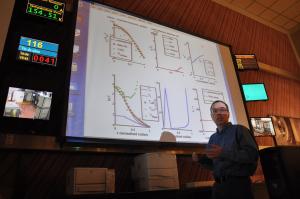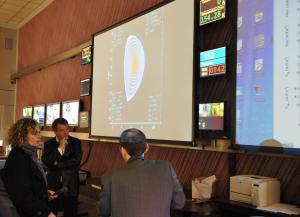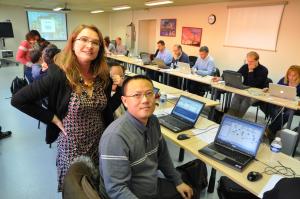The place was the Tore Supra Control Room, the date: Thursday 10 March. As we watched the large control screens covering the walls, however, place and date appeared different: we were in the ITER control room in the year 2030, four years after ITER produced its first deuterium/tritium plasma.
The illusion was almost perfect. As the characteristic "D shape" of the ITER plasma came alive on the left screen, dozens of graphs appeared on the right: temperature, heating power, plasma current ...
Had it been a real shot instead of a virtual one, there would certainly have been cheers in the control room. Parameters appearing on the screens were perfectly in line with what ITER was designed for: ion temperature in the plasma core reached 250 million °C; plasma current was measured at 12 MA; and, as anticipated, fusion power production was in excess of 500 MW.
What was feeding these figures to the screen was a simulation code named METIS. Such codes are essential to predicting the behaviour of future ITER plasmas. "When ITER enters operations," explains Jean-François Artaud of CEA Research Institute on Magnetic Fusion (IRFM) and METIS's main developer, "every shot will have to be very carefully prepared and simulated. The more precise and thorough our simulation codes, the more efficient our plasma shots."




